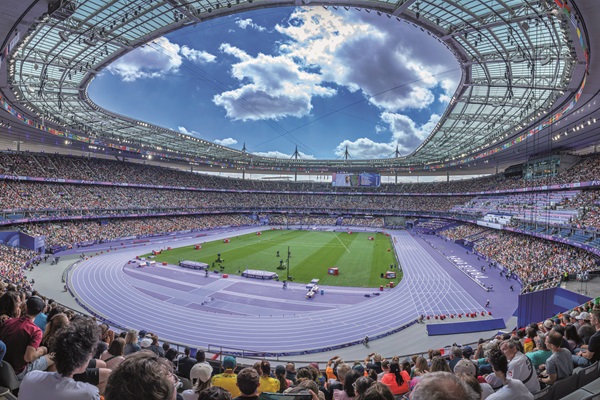After proving itself on the world’s biggest stage, remote production ushers in a new era in global sports broadcasting.
In the summer of 2024, the world’s attention was focused on a certain global, multi-sport competition held in France. And while the excitement and action were centred in Paris, much of the production technology supporting coverage of the event was distributed all over the world. It marked a significant milestone in broadcast technology, boasting one of the highest densities of remote production the industry has seen to date.
The triumph of remote production in Paris was made possible by the industry’s increased understanding of which personnel need to be on hand for any given event. While certain staff, such as camera crews and audio technicians, still require a physical presence at the venue, many others can now perform their duties remotely. This shift has been enabled by advancements in technology and the industry’s growing confidence in remote workflows, which has developed over time through their successful use in increasingly larger events – culminating in Paris at one of the greatest spectacles on Earth.
The technical underpinnings of remote production environments centre on managing latency – the time it takes for an action performed by a remote operator to impact the live production. The key to successful remote production lies in minimising this delay, allowing a seamless experience that mirrors on-site workflows. There are two main models of remote production, both influenced by latency to varying degrees.
Remote control centres
In the first model, the video and audio feeds from on-site cameras and microphones are transmitted back to a remote production control centre. In this model, latency has historically been a significant challenge. With traditional codecs, it can take the director a few seconds or more to see the results after they’ve asked the camera operators to make an adjustment. This can lead to a frustrating and inefficient process. However, this challenge has been significantly mitigated with the introduction of the JPEG XS codec, which dramatically reduces latency, enabling near-instant feedback while maintaining high picture quality.
A great example of this model in action was at the 2022 World Cup in Doha, Qatar. During some of the matches, shaded camera signals and source audio were compressed using JPEG XS and sent to control rooms located in Europe, where the actual cutting and replay operations took place. JPEG XS enabled a very short loop between director and camera, while the replay operators, directors and technical directors had the benefit of real-time decisions and collaboration in a standard control room, as effectively as if they were on-site. This kind of workflow excels at maximising resource utilisation, as the same set of production equipment, the same control room and even the same crew can do multiple matches in the same day.
Remote operators, onsite equipment
The second remote production model takes a significantly different approach. Here, the truck, replay machines and even production switcher are physically at the event venue, while many of the operators are at another location controlling the equipment remotely. This model has proven to be very effective when retrofitted to existing trucks – the production signal itself remains within the truck until it’s finished – while delivering the financial benefits of reducing the number of on-site personnel.
In this scenario, operators have traditional replay shuttle units and production switcher panels and see the multi-viewer outputs for their operating positions, but they are physically separated from the venue and the equipment they are controlling. When they perform an action, the command is sent back to the truck, where the equipment carries it out. While this model introduces slightly more operational latency, due to the physical separation between the operator and the equipment, modern codecs still allow the lag in the video returns to be minimised.
Cost, efficiency and sustainability
Both of these remote production models have gained considerable traction in the broadcasting industry and are being widely used around the world. Each offers distinct advantages depending on the needs of the production and the capabilities of the facilities involved. For broadcasters, the benefits of both are clear. Each allows them to reduce the size of on-site crews, allowing them to cut down significantly on travel expenses, logistics and the environmental impact of sending large teams to international events.
But perhaps the most significant benefit is the fact that remote production doesn’t compromise the quality of the broadcast. Ultimately, it is the viewers at home who will decide if remote workflows work or not. From what we’ve seen, they can’t tell if a production was produced on-site or remotely, because the picture quality and production values are equally high in both cases.
Looking ahead
As demonstrated in Paris, remote production technology has matured to the point where it can be relied upon for even the largest and most high-profile events. And with the two main models of remote production, broadcasters now have the flexibility to choose the approach that best suits their needs. Both models are highly effective and will certainly see even more widespread adoption in the coming years, introducing a new era in global sports broadcasting.
 John Mailhot is Senior VP of Product Management at Imagine Communications.
John Mailhot is Senior VP of Product Management at Imagine Communications.
















































































